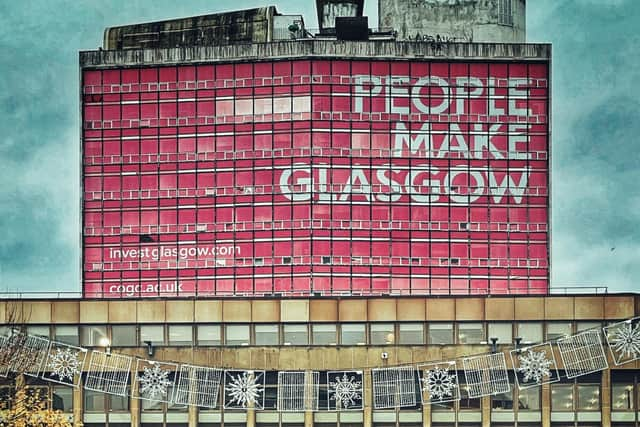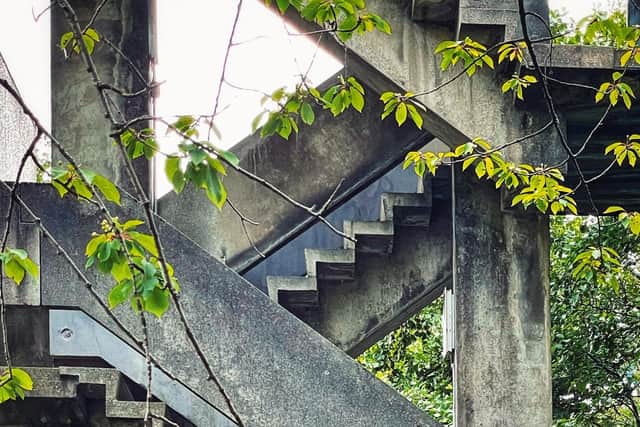Glasgow's concrete buildings reflect a time when people dared to dream
To see the drama playing out, it is worth tracking down a 1968 book called Architecture of Glasgow.
Unusually for the times, the authors were besotted with the city’s Victoriana. And they were horrified by the wanton destruction of so many late-nineteenth and early-twentieth century buildings, their text littered with cries of “terribly mauled”, “peculiarly callous”, “horribly mutilated”, and much more.
Advertisement
Hide AdAdvertisement
Hide AdThey knew they were going against the grain. But they did see glimmers of hope. They sensed the beginnings of “more respectful and serious critical attention” and claimed that, in some parts of the country, Victoriana was “definitely in".
Half a century on, and the city’s stock of post-war architecture contends with a similar climate of disinterest-come-disdain. Much of it has already been lost. Much has been disfigured. Much is at risk.
And – aside from the chatter of a few enthusiasts – there is little sign of any real renaissance.
Wander down any Glasgow street, pick a few people at random, and it is unlikely that any will hold much affection for the concrete that surrounds them. Yet the city is home to some of the most adventurous and courageous buildings of the post-war era.
And one can’t help wondering, how will attitudes have changed in another 50 years? Will Glasgow’s post- war architecture have finally earned some deference? Will future generations be appalled at how much was lost? Or will it still be widely derided?


In our book Braw Concrete, we take the view that, as with any architecture of any period, it is a mixed bag. No, not all of Glasgow’s post-war architecture is good. Yes, there were a few unconscionable errors of judgement. But some of these buildings are spectacular, a lot are impressive, and they all deserve a little respect.
So, why do these buildings warrant reappraisal? We would argue that there are four big considerations.
First, these buildings are among the few remaining markers of a time when people dared to dream of a bolder, brighter future – with decent housing, universal healthcare, meaningful education, benign institutions, and a cityscape that would accommodate the modern age.
Advertisement
Hide AdAdvertisement
Hide AdAt the time, Glasgow played host to a cadre of young architects who clearly regarded their work as a noble endeavour. Perhaps naïve, perhaps misguided, perhaps with an improbable point-of-view on what was best for the city and its citizens. But they plainly believed they were putting in place the institutions and infrastructure that would befit a modern, progressive city. It was all about building a better world –


quite literally.
And, yes, certainly, there is a political dimension to this. Often, the architecture of the time is used to discredit the politics of the time and vice versa. You could even argue that the desire to obliterate it has become something of a wedge issue. Consider, for example, the subtext of Trump’s Promoting Beautiful Federal Civic Architecture Executive Order, or the Tory government’s Building Better, Building Beautiful
Commission. In each case, ‘beautiful’ is code for ‘classical’.
Secondly, much of Glasgow’s post-war architecture is unique – distinctively Glaswegian designs, such as the offices of long-established Glaswegian architectural practices that gave flight to a new generation of native Glaswegian architectural talent.


Arguably, it is a distinct school of architecture that the writer and journalist Owen Hatherley describes as “roughly textured and ribbed, bulky and a little dreich, and with a medieval eye for townscape scenography”. You won’t find anything quite like it anywhere else in the world.
Thirdly, this was truly revolutionary design. Freed from the orthodoxy of structuring their buildings around the confines of sturdy, load-bearing walls, and liberated by the possibilities of steel and concrete construction, architects and engineers could begin experimenting with heroic new forms.
Consider the serrated edges of the Wolfson Centre at the University of Strathclyde; swoon over the way the Glasgow School of Art’s Bourdon Building launches itself horizontally across Renfrew Street; marvel at the gravity-defying stairtower which is thrust recklessly from the southern end of the University of Glasgow’s Adam Smith Building. In short, look afresh at all of these buildings, their ingenuity and their
daring.
And lastly, in these times of environmental crisis, should the old be swept away, simply to make way for the shiny and new?
Advertisement
Hide AdAdvertisement
Hide AdIt is often assumed that, by their very nature, post-war buildings will always be energy hungry. This is not necessarily so. Across the world, many have been rehabilitated to achieve a first-rate environmental performance. For inspiration, take a look at the repurposing of Marcel Breuer’s mighty Pirelli Building in Connecticut as a celebrated net-zero, Passivhaus-certified hotel – and the assertion of its architects that
poured concrete walls and precast panels are typically easier than other construction types to seal and insulate.
With millions of tonnes of embodied carbon, and rugged concrete husks that could last for several thousand years, there is a strong environmental case for retaining these incredible structures. And, as a by-product, we could also hold on to the spirit of architectural audacity, the tradition of Glaswegian exceptionalism, and the notion of social justice that gave birth to them.
Braw Concrete by Peter Halliday and Alan Stewart is published by the Modernist Society on November 4, priced £25.